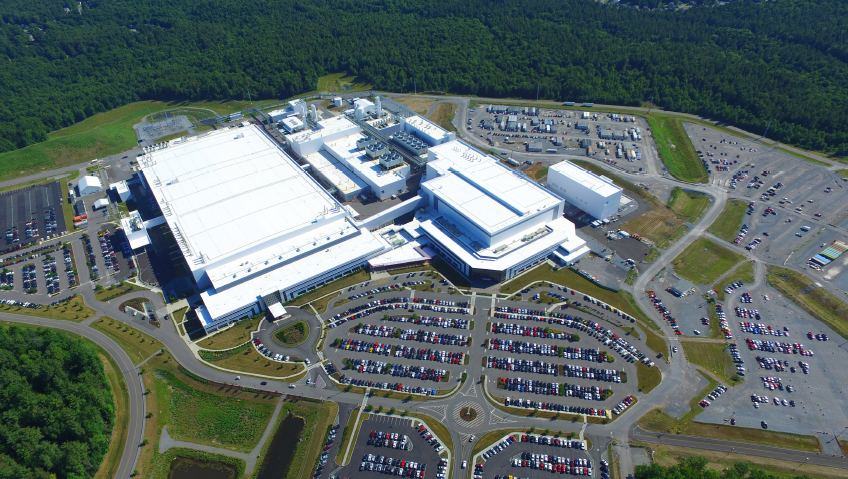Berlin, Connecticut is on a mission to bring in business. Armed with forward-thinking, pro-business policies and a wealth of advantages, this New England town is making a name for itself among enterprises looking for an advantageous home base.
Nestled in the heart of the state, Berlin is ideally located for business. “We are the geographic center of Connecticut,” says Mayor Mark Kaczynski. “It’s central for businesses to locate there, easy for them to get around and do their business anywhere in Connecticut, Massachusetts, or New York.”
The town sits roughly halfway between New York and Boston, at the hub of the regional road network, which includes interstates and north-south state highways. “We’re near all the major highways,” says Economic Development Director Chris Edge. “We’re about an hour and a half to both New York City and Boston by car and by truck,” and, with the recent upgrades to the New Haven-Springfield Commuter Rail Line, New York City is just a short train ride away.
This enviable location provides access to a large pool of talent, as well as making it easy to transport goods to and from Berlin. No wonder Berlin has attracted regional and national behemoths, including Home Depot, COMCAST, Eversource, and Assa Abloy.
Despite becoming a business center, Berlin has managed to keep its small-town, New England charm, making it a great place to live as well as to work. “Berlin began as a farming community,” says Mayor Kaczynski. When he was growing up there, bucolic dairies dotted the countryside, and residents enjoyed ice cream made with fresh cream from local shops.
In recent years, as the town attracted more residents and businesses, it has shifted from a farming community to a suburban one but has maintained its original attributes—along with a handful of its original farms. “Since we were a former farming community, we kept a lot of open space,” the Mayor says. This includes “over 2,000 acres of open space that the town has purchased for walking trails, parks, and playing fields. It’s just a great suburban community.”
The strong local economy provides the resources for efficient public services and “a fabulous school system,” he says. “We fund it quite well, so they do well.” Town-wide events and amenities, from the Berlin Fair to local sports teams, bring locals together. “It’s just a wonderful community, with very friendly folks,” he says. “We’re very, very lucky.”
A deliberate and thoughtful focus on economic development has brought a number of diverse sectors to town, from manufacturing and aerospace to medical devices and construction. “In the last six to seven years, we’ve really revamped our economic development program, which has attracted a lot of businesses to town,” Mayor Kaczynski says. “We have seen, over the last six years, maybe a hundred million dollars of investment in town.”
Relatively low taxes have been one enticement, particularly during challenging times. “We’ve kept the town taxes reasonable,” he shares, “and we’ve kept our debt low.”
Implemented under Mayor Kaczynski’s leadership, the town’s tax incentives have been strategically planned to be advantageous for Berlin and for businesses. “What we’ve done is tiered them from three years up to 10 years,” Edge explains. “So essentially, the more you spend, the more you get.”
“A lot of business has discovered Berlin and moved to Berlin from surrounding towns just because of our attractive incentives,” Mayor Kaczynski adds. “The government, the town hall, has been much more receptive, helping with building permits and planning and zoning. We changed the attitude because we had a little bit of a reputation going back ten to fifteen years [that] Berlin was business-unfriendly. It’s completely changed; it’s 100 percent different and business-friendly now, and certainly, our economic development reflects that.”
Berlin’s economic development plan emphasizes new development, both from the ground up as well as in the form of large expansions of existing buildings. “That has really worked well and has helped bring in firms that really make up the fabric of the community and add to what’s already here,” says Edge.
This focus on maintaining a strong local business environment was evidenced throughout the pandemic. “During COVID, about eighty percent of our daytime population never stopped working,” he says. It helped that a sizable portion of the local economy included essential workers, the largest being Eversource Energy and people working in the construction and manufacturing sectors. In fact, the town is home to around 45 manufacturing companies with 20 or more employees.
Remarkably, Berlin’s steady stream of investment did not stop during the COVID shutdown. “Through the pandemic, we’ve had eighty-four new ribbon cuttings in Berlin,” Mayor Kaczynski says. “Mom and pop businesses [and] manufacturers have moved to town from surrounding towns.”
“A lot of people rediscovered what was in Berlin,” Edge affirms. Quarantine created new demand for local offerings, which launched a slew of restaurant openings. “We had more restaurants open up during COVID than close,” he says.
“Small businesses in particular opened up, and they have done well and are thriving,” Mayor Kaczynski adds. “The fortitude that these small business owners had to open during COVID—nobody knew what was going to happen with COVID, and they’ve all done well, and they keep moving forward.”
Now, the post-pandemic landscape looks even more promising. “We’ve seen a lot of the investment that was planned before COVID go forward,” Edge says. “We currently have four major projects, three of which are mixed-use with commercial and residential components. We have about 400 apartments under construction including Steele Center @ Farmington Ave which is an $18 million Transit Oriented Development project by the Berlin train station.”
Located right next door to the high-speed rail station, the Steele Center @ Farmington Ave project brought together several dormant town-owned parcels and initiated collaboration between the state of Connecticut, four different other state agencies, and a private developer. “We’ve all come to the table to problem solve, help establish a town center that was missing in town and generate commerce,” says Tony Valenti, Principal of Newport Realty Group, the developer of Steele Center. This new, walkable town center has created more foot traffic and brought in new places to eat, drink and shop, giving locals more opportunity to gather as a community.
The three-story Steele Center project includes 70 market-rate apartments and approximately 15,000 square feet of commercial space spread over two and a half acres. “So for a suburban community, it’s a very dense development, but the nice thing is it fits the community,” Edge says. “We worked very, very hard to make sure that the scope, size and look fit exactly what we saw for the future of Berlin.”
In addition to the new restaurants which opened during the pandemic, Berlin has welcomed a brewery and a locally owned coffee shop. The town continues to encourage the opening of new restaurants, particularly those that offer residents a “diversity of tastes,” says Edge. “We had been a place that has had pizza and Americana for years,” but now the town is welcoming everything from Mediterranean and Thai cuisine to a brand new Gastro Pub. And the efforts to attract a wide variety of eateries will continue.
Many former Berlin businesses are even returning to town, eager to take advantage of this new, business-friendly environment. For example, an HVAC contractor and an electrical contractor have both recently come back to the community. The former bought a 30,000-square-foot building and brought 100 employees and 75 trucks with the business. The latter built a 10,000-square-foot building and has been approved to build another 10,000 square feet.
“Those are the kind of things that we’re seeing,” Edge says. “I see that as turning the corner. We’ve been able to say, ‘Look, it’s a great place to be. We’d love to have you back again.’”
The return of these contractors, while making a significant impact in their own right, also demonstrates a larger trend. “When you look at just those two, those are pretty major investments,” Edge says. “They brought back the jobs, the equipment and their love of Berlin.”
Indeed, there are still opportunities for businesses eager to take advantage of all that Berlin has to offer. “We have the land to develop, although it’s filling up quickly,” Mayor Kaczynski says.
With town leadership eager to keep welcoming new enterprises for the benefit of both residents and business owners, a new campaign sums up the town’s thriving business environment perfectly: ‘It’s all in Berlin.’






